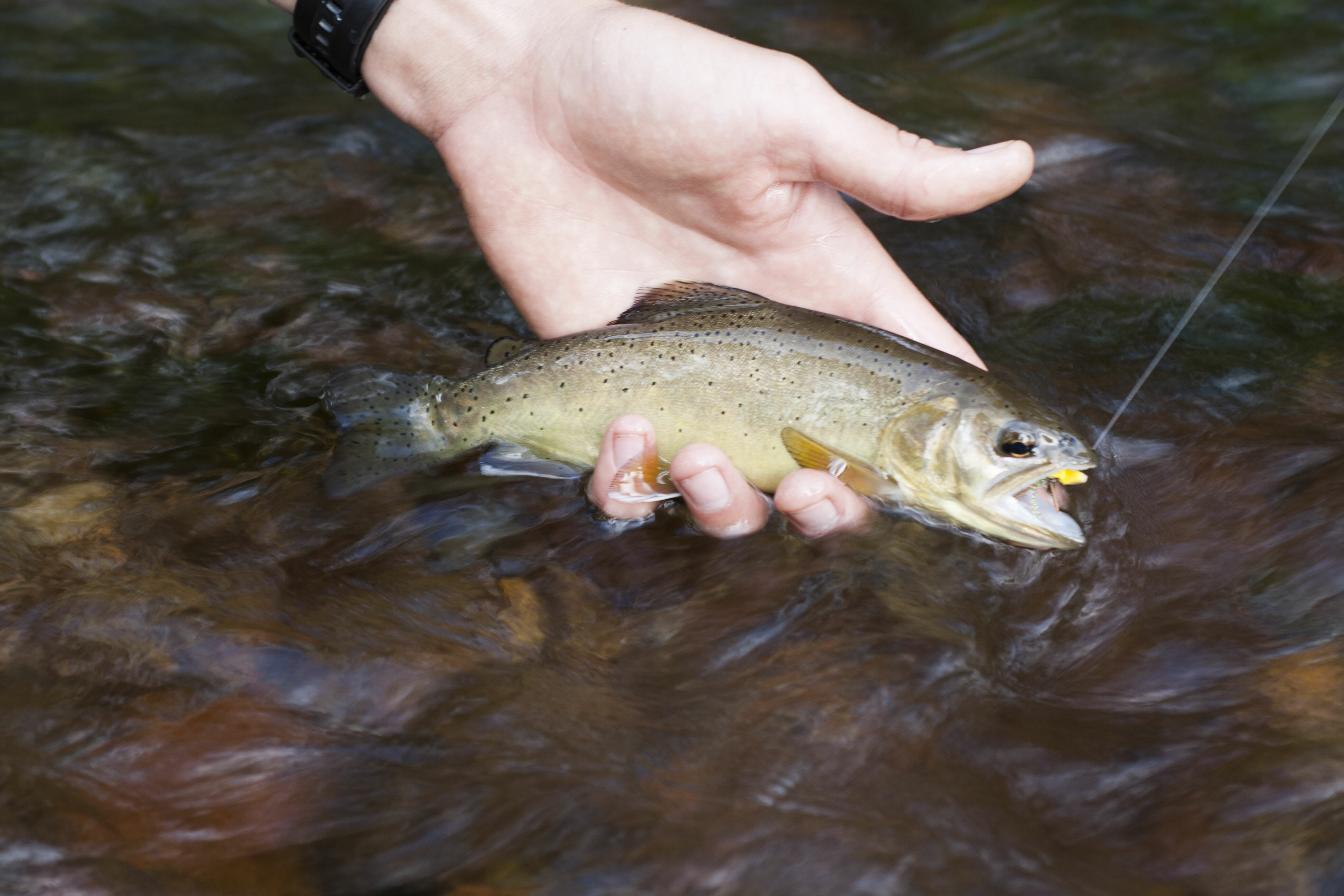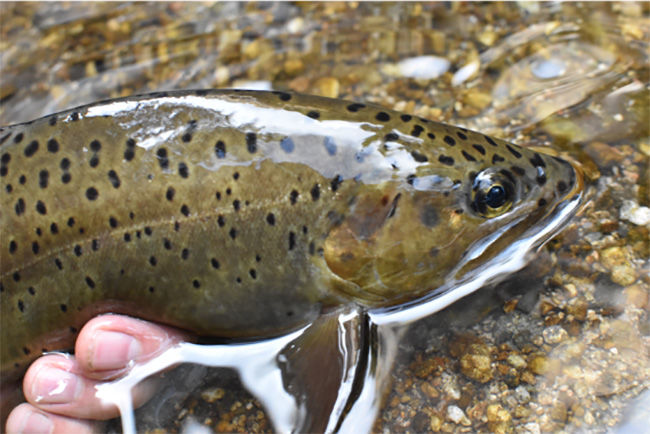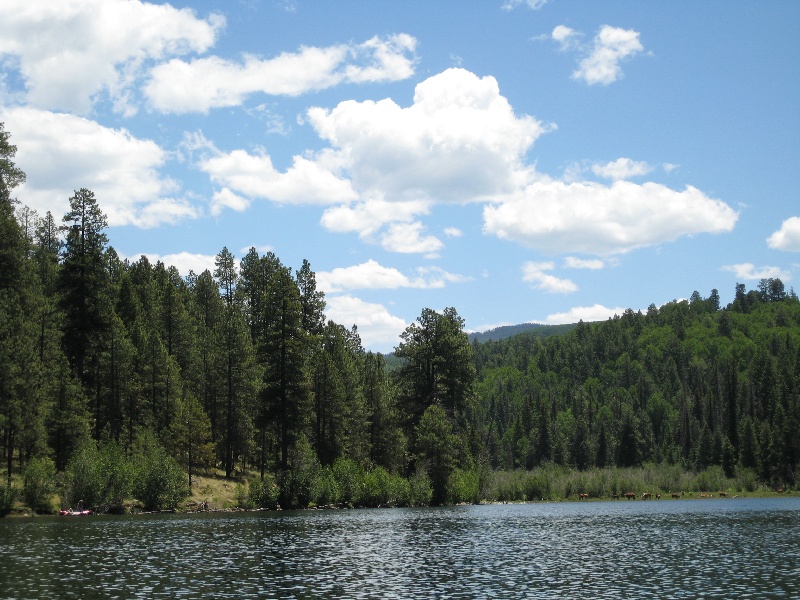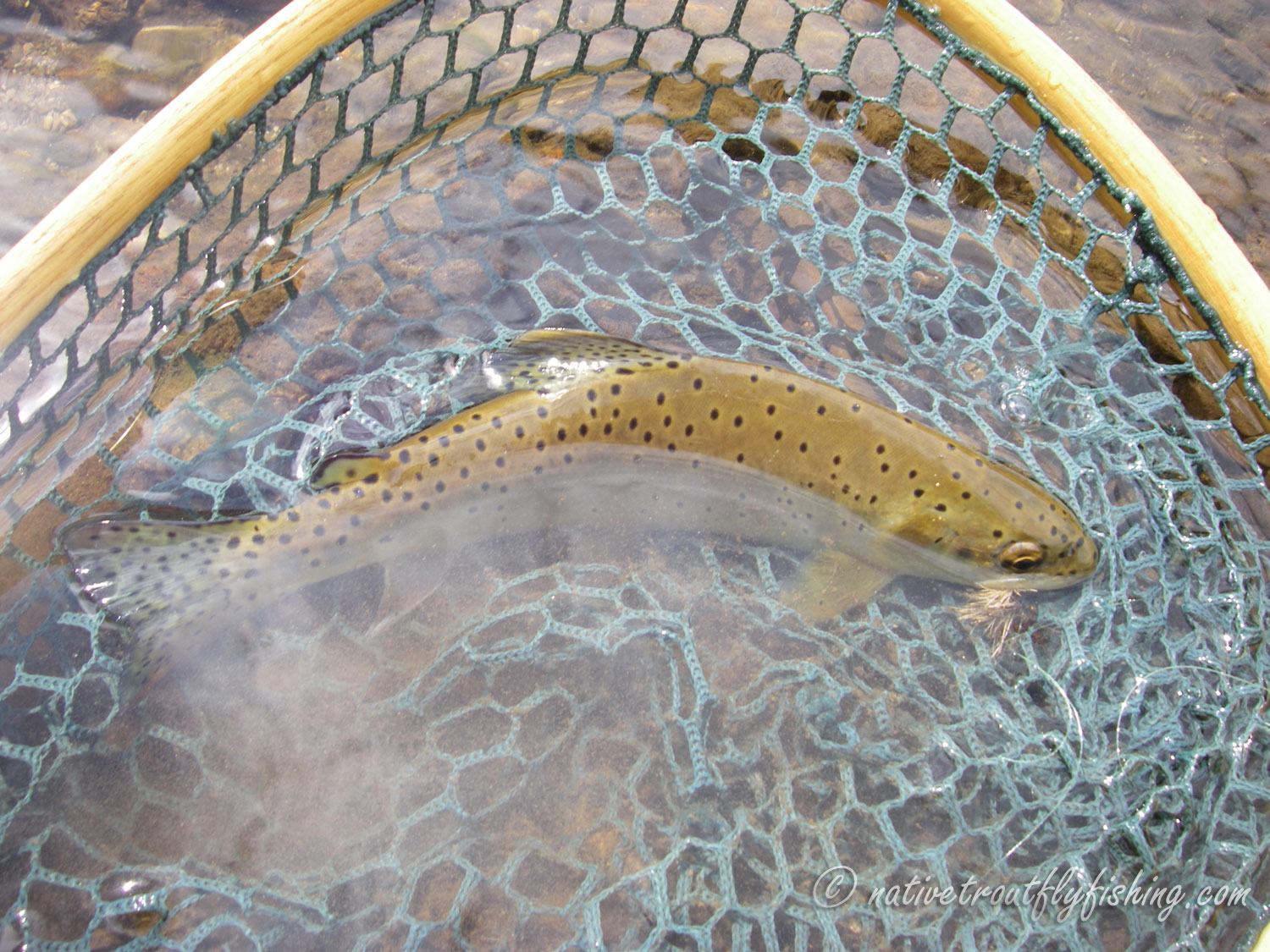

The range of the Apache trout remains limited, which puts it at risk, but it is now common enough that limited fishing is permitted. Cutthroat trout are also genetically similar and cross-breed with Apache trout, compromising the genetic purity of each species. Populations that are considered to be genetically contaminated (containing hybrids) are exterminated. Today, the main risk to the Apache trout is its easy hybridization with the rainbow trout. Population numbers for this species are still rising.

When this act was replaced by the Endangered Species Act of 1973, they became one of the first fish species protected under the newer Act. Once the Endangered Species Act of 1969 was passed, they became one of the first species listed under it. By the late 1960s, their range had been reduced to around 30 miles (48 km) of these streams. Around 100 years ago, they could be found in 600 miles (970 km) of streams in the White Mountains. While the IUCN considers the Apache trout to be critically endangered, it is listed as threatened under the Endangered Species Act. Apache trout are raised in Federal and state hatcheries, and reared fish have been used to assist with recovery and to maintain populations for sport fishing in certain streams and reservoirs.

In lakes, they also eat small fishes and zooplankton.Ĭonservation Recovery and management efforts for Apache trout have been ongoing since the 1940s. The Apache trout eats both terrestrial and aquatic insects, such as Trichoptera and Diptera. Maturity was found to occur in three years, and fecundity is based on the size of trout. Life history The Apache trout spawns from March to the middle of June, and varies with elevations. Apache trout have been introduced into isolated streams outside of their historic range in the Pinaleno Mountains, Mount Graham and the North Rim of the Grand Canyon. The Apache trout is native to the upper Salt River watershed (Black and White Rivers) and the upper Little Colorado River watershed.

It natively lives in clear, cool streams in the White Mountains that flow through coniferous forests and marshes, but has been introduced into several lakes in the area. There is a cutthroat mark below the lower jaw, ranging in color from yellow to gold.ĭistribution The Apache trout is the state fish of Arizona, and is one of only two species of trout native to that state, with the other being the gila trout (O. The top of its head and back are dark olive in color, and it has the appearance of having a black stripe/mask through each of its eyes, due to two small black dots on either side of the pupil. Apache trout are a yellowish-gold color with a golden belly and have medium-sized dark spots that are evenly spaced and that may extend below the lateral line and onto the dorsal and tail fins. The world record Apache trout measured 60.96 cm (24 in) and was caught in Hurricane Lake in 1993. It rarely exceeds 25 cm, but can reach up to 40 cm in its native, headwater streams. Thanks to programs that restock and restore fish, the Apache trout has been introduced in other parts of Arizona, including the Lee Valley Lakes and Little Colorado River.The Apache trout measures in length from 6 to 24 inches (61 cm), and weighs between 6 ounces and 6 pounds (2.7 kg). This fish is one of two species of trout that are native to Arizona. Where to catch Apache TroutĪpache trout can be found in the streams and lakes of Arizona’s White Mountains. Their dorsal, anal, and pelvic fins have white-orangish tips, while the adipose fin has more of a black margin. They have two small spots on both sides of the pupils that make their eyes look as if a stripe is going through each eye. Apache trout are dark greenish-brown along their back and head. These markings can also be present on their dorsal and caudal fins. Adults have distinct dark spots that are evenly distributed, are oval-shaped on their flanks and head, and may extend beneath the lateral line of their bodies. The juveniles have vertical markings that fade as they grow bigger. Apache trout have gold abdomens and green-gold-yellow bodies.


 0 kommentar(er)
0 kommentar(er)
